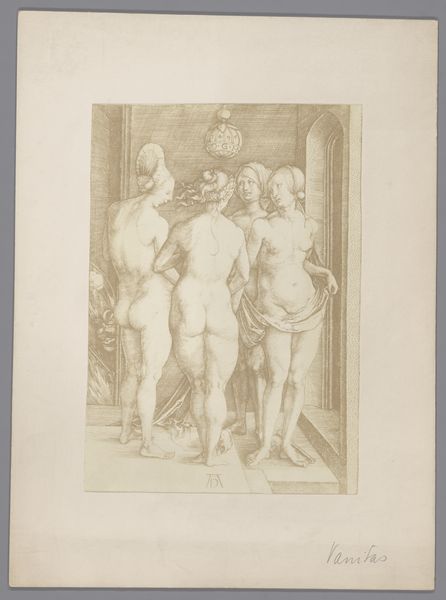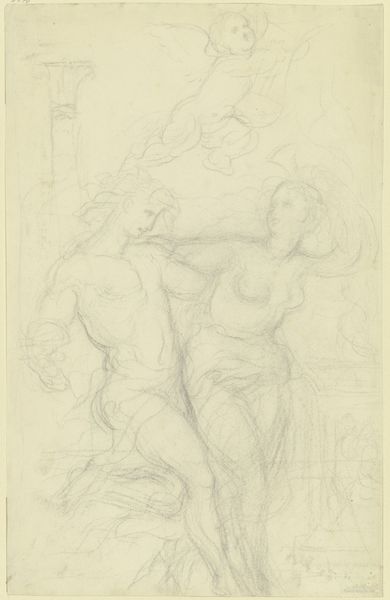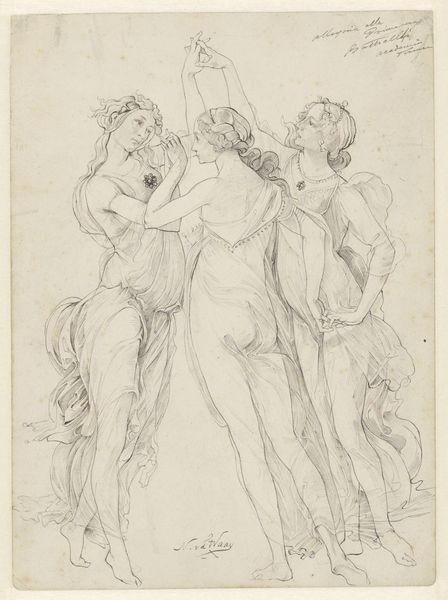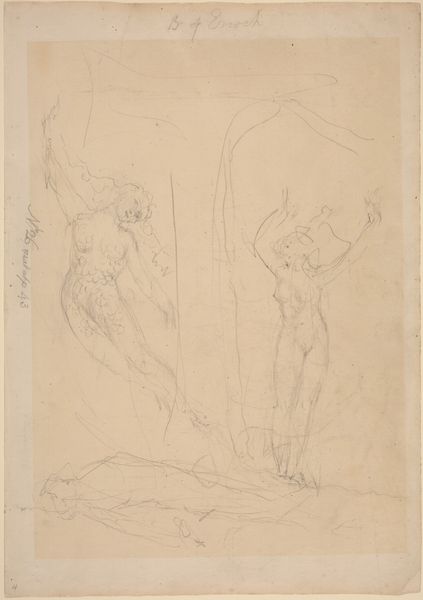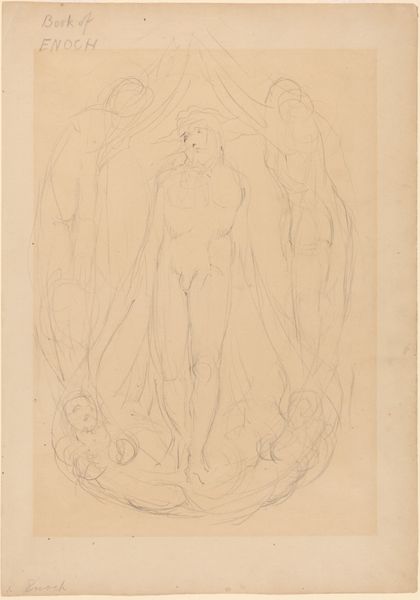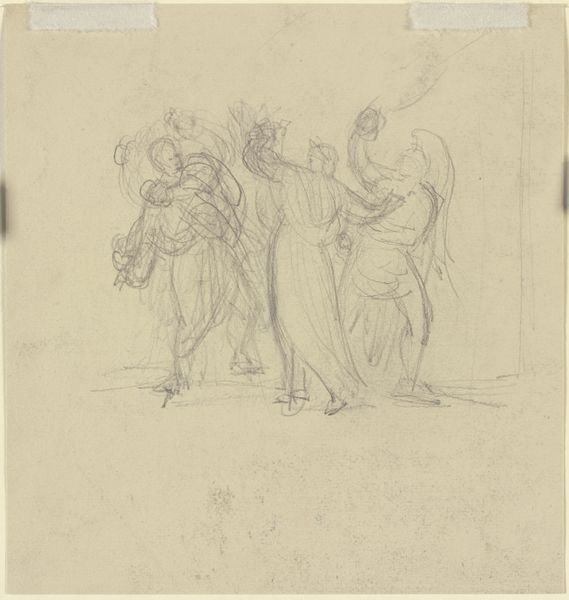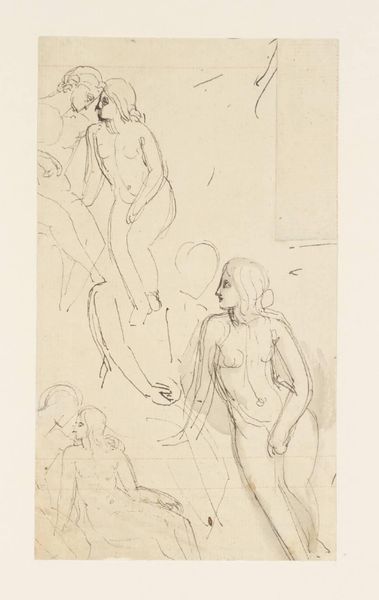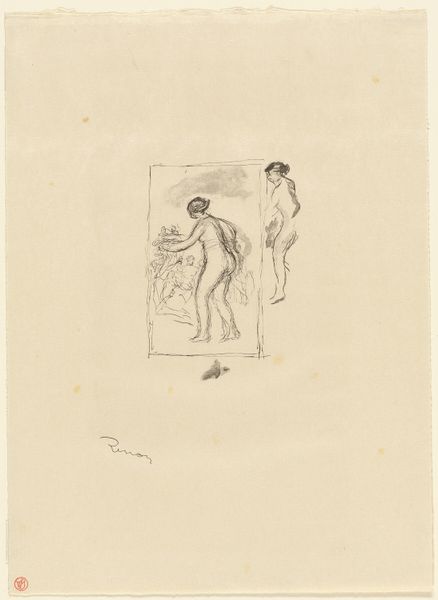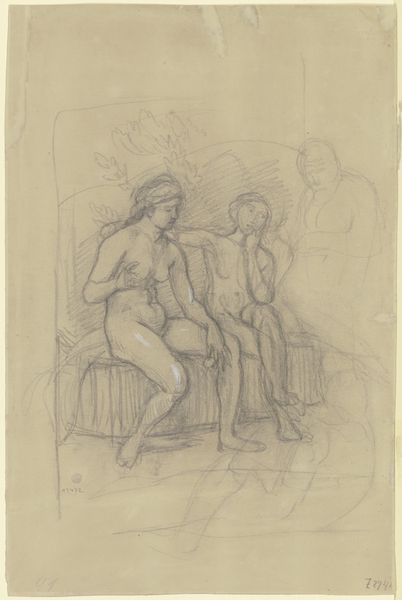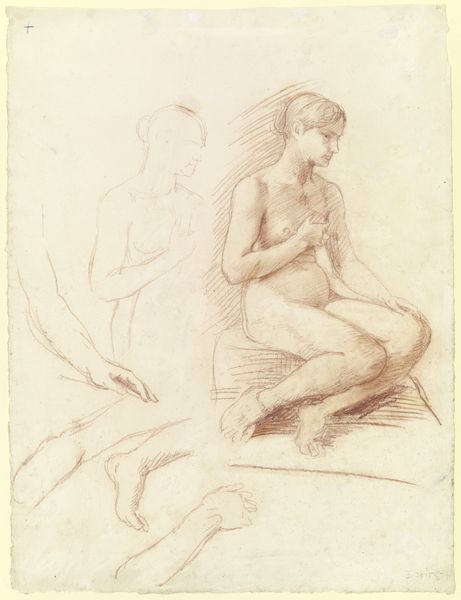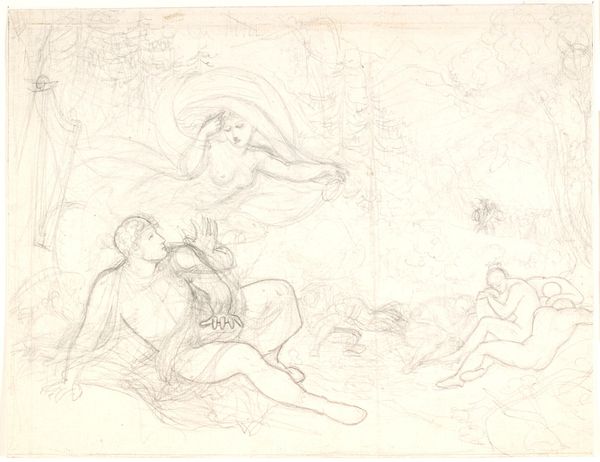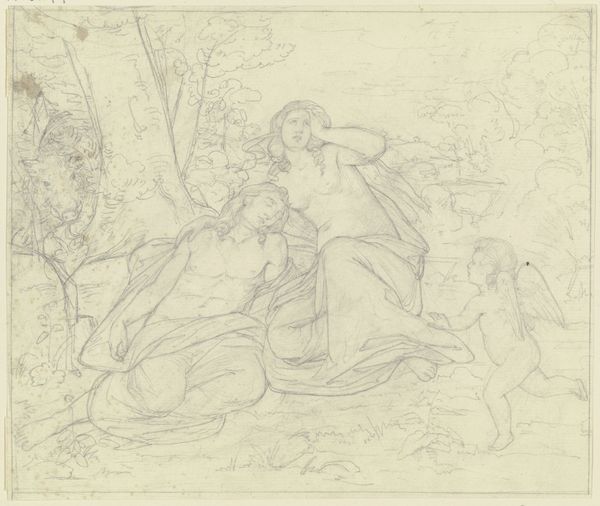
Eine Frau tritt einem als Rückenakte gegebenen, umschlungenen Paar entgegen
0:00
0:00
drawing, pencil
#
drawing
#
16_19th-century
#
figuration
#
german
#
romanticism
#
pencil
#
nude
Copyright: Public Domain
Curator: Here we have a pencil drawing titled "Eine Frau tritt einem als Rückenakte gegebenen, umschlungenen Paar entgegen," which translates to "A woman approaches a pair embracing, rendered as back views," by Gustav Heinrich Naeke. Editor: Immediately, I see a somewhat unsettling, spectral quality. The figures are rendered with very delicate pencil lines and appear to almost float on the paper, adding to the piece’s dreamlike state. Curator: Exactly, the medium speaks to its process! Note the quick strokes, typical of sketches intended for larger works. We can imagine Naeke working quickly to capture a fleeting moment. Pencil itself became far more widely available in the 19th century. This speaks to increased access to art-making materials for a broader spectrum of practitioners. Editor: And what about the figures themselves? The nude couple locked in an embrace seems almost unaware of the draped figure approaching them. Is it judgment, a warning, perhaps something supernatural? The line quality defining her form is slightly darker, suggesting maybe the drawing was reworked in that area. Curator: Possibly. Or it emphasizes her symbolic importance. The context of 19th-century Romanticism is vital; a period grappling with spiritual anxieties and social upheavals, we often find artists turning towards themes of morality, desire, and the human condition as commodities under industrial capitalism. Editor: You’re right. The tension between the carefree nudity of the couple and the covered, almost reproachful, figure certainly sets up that kind of symbolic framework. The composition creates a clear division, and one can certainly interpret a societal judgement in how the figures’ costumes work in relationship to one another. The starkness of their environment helps heighten this too. Curator: A very astute observation. How the materials create an almost palpable tension underscores the thematic significance. The drawing itself functions as an artefact—witness to evolving social codes surrounding bodies, labor, and value. Editor: Indeed. Thanks to this artwork’s unique aesthetic qualities, especially its compositional tension and the relationship between nude versus dressed subjects, we can derive meaning and insight into Romantic period values and approaches to art making.
Comments
No comments
Be the first to comment and join the conversation on the ultimate creative platform.
